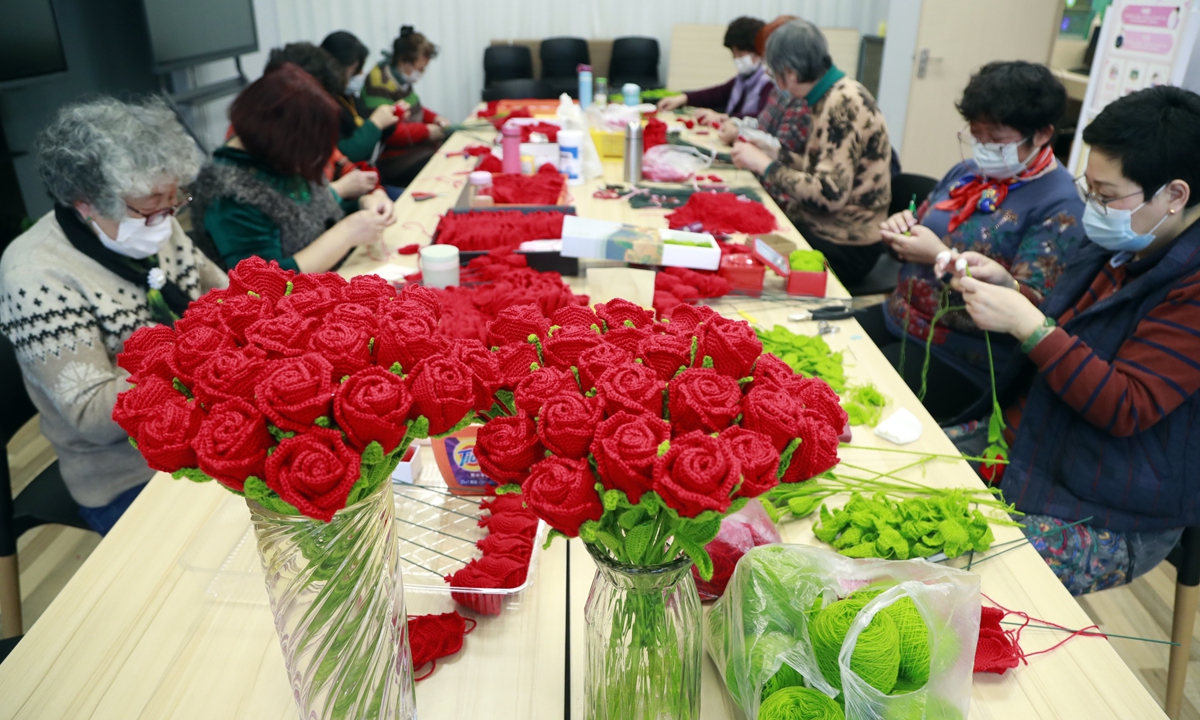SPORT / MISCELLANY
Shanghai knitter makes wool bouquets for Winter Olympic awards

Photo: VCG
Li Meili, inheritor of a traditional Shanghai wool-knitting technique, still can remember the exciting moment in October 2021, when she learned the wool bouquet was chosen as the final plan for the award ceremony of the 2022 Beijing Olympic Winter Games."At that time, I felt my dream was realized. Our design scheme had been reviewed by the organizing committee for more than four months. I once thought it was hopeless," said the 70-year-old Shanghai resident.
Li began to learn the knitting technique in her 50s after retirement. The wool flowers she knitted once served the fourth China International Import Expo and the 10th China Flower Expo, receiving warm welcome from the visitors.
The Olympic bouquet consists of seven different wool flowers including roses, lilies, osmanthus and green olives. According to the organizing committee of the 2022 Beijing Winter Olympic Games, wool bouquets will never wither and have the characteristic of low-carbon, which reflects the concept of a "green Olympics."
Li is quite familiar with all the kinds of flowers in the bouquet, but she decided to be stricter with herself to meet the Olympic standards. "I chose thin wool. Though the speed of knitting will be slower, but the bouquets will look more exquisite," she said.
A total of 1,251 bouquets are needed for the awards of Beijing Winter Olympics and Paralympics. Each flower was handmade, which requires plenty of time and manpower.
"It takes 20 minutes to weave a rose petal. A rose consists of 10 petals, three leaves and one stem. A weaver needs to spend at least five hours on one rose," said Li. "Therefore, to complete making a bouquet will require 35 hours. All the bouquets will take nearly 50,000 hours to finish knitting."
Hengyuanxiang Group, a wool manufacturer based in Shanghai and also one of the official sponsors of the Beijing Winter Olympics, recruited knitting groups in Beijing, Shanghai, Tianjin, Zhejiang and Jiangsu to join in the project, while Li is responsible for personnel training, quality control and final assembly of the bouquets.
In order to ensure the consistency of the bouquets, each knitting group is only in charge of one or two kinds of flowers, which will be sent to Hengyuanxiang Group for assembly after completion.
A perfectionist, Li did not want to produce any waste. "The original bouquet was thinner. I filled the redundant 'branches' into it to make it touch more comfortable," said Li. There is only one week left before the final delivery date on January 14, with around 400 bouquets to be assembled. "I start to work at 8 am these days. I've had less sleep, but it is a worthy cause," she said.



